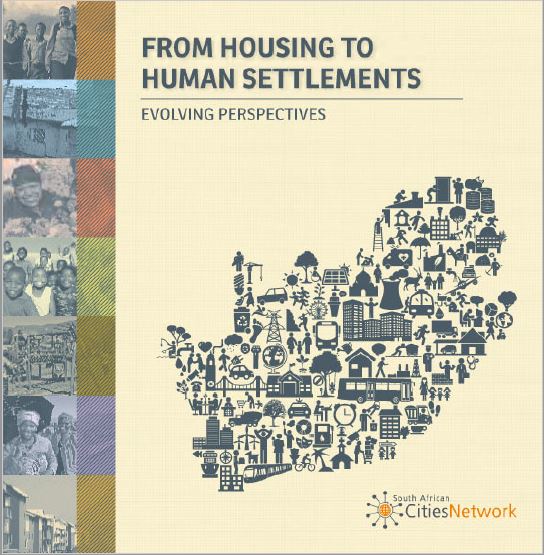From Housing to Human Settlements
Evolving perspectives

Preface
The year 2014 marks the passing of a full generation of investments in the built environment to produce a more socially just, living environment for all South Africans. It reveals discernibly the human geographical fault lines of an inherited inequality in land and housing, and conditions that reproduce exclusion. Spatial fragmentation (and its application and incoherence) cannot be undone in a single span of 20 years (the global time horizon used to measure progress in the built environment). However, the past 20 years has seen a significant refining of housing and human settlement programmes and fixing of institutions for the building of new projects.
The co-production of our human settlements environment is centred on the consensus of the social contract contained in our Constitution, about redressing our inheritance, deconstructing the socio-spatial economic incoherence, and reframing for more socially just outcomes. Several pathways to a future defined by the National Development Plan (NDP) are proposed for co-producing a more equitable, just and vibrant set of human settlements. This timely publication aims to interrogate these pathways, the roles and the key factors that will have to be considered over the next 30 years to achieve the transformed future for South Africa, as highlighted in the NDP. Over this period, some critical considerations are:
- To learn from the previous 20 years in order to identify what needs to be done to unlock and catalyse the kinds of development that will transform urban space.
- To understand the notion of access and how citizens experience and navigate the city on a daily basis, so that interventions in human settlements, transport and economic development can contribute towards spatial transformation that enables poor communities to develop ‘positive’ economic and social investments.
- To know who bears the cost of development and who ultimately benefits from public investments in our cities, while recognising that investment on its own is not a panacea and that two critical issues should guide investment: (i) preventing the reproduction of ghetto economies, and (ii) consistent and effective urban management.
- To enable municipalities to fund development in their areas, in particular incorporating and growing poor areas as part of the overall city rates base.
- To allow for spatial planning and budgeting, which will require reviewing existing governance, institutional and financial arrangements, resolving distributional equity and determining the ideological framework for investments (is it about social returns or financial returns?) that reflect more of the social returns required by a developmental state.
The priorities set out in the NDP and the Medium-Term Strategic Framework for South Africa must guide and inform our interventions over the medium to long term. These set the parameters for funding and how resources are to be spent. The challenge is to determine the key strategic elements for cities over the next five years and to support cities in identifying these priorities and the required governance and institutional arrangements.
In this publication, it is important to distinguish between what is holistic and place specific. Place specificity is vital to the city’s planning process and requires looking at the investment strategy that needs to be put in place, the aspects of existing programmes that should continue or be scrapped, and the financial framework and structure that will facilitate the effective and efficient delivery of interventions. In all this, the challenge is to ensure that the delivery of sustainable settlements by local government accords with the broader development agenda of the state to improve lives and secure future generations of South Africans.
Ahmed Vawda, Deputy Director General
Department of Performance Monitoring and Evaluation,
Presidency of South Africa.


Comments